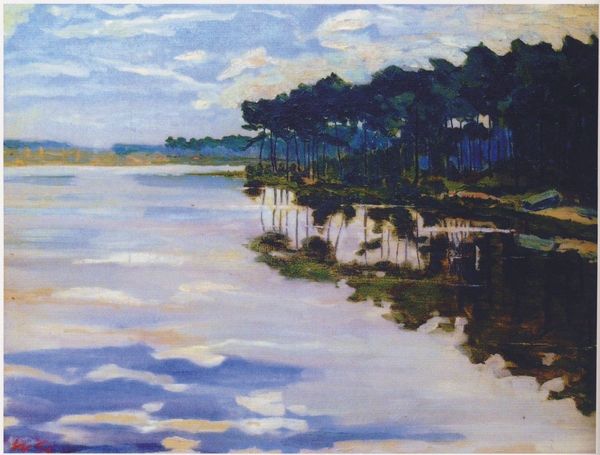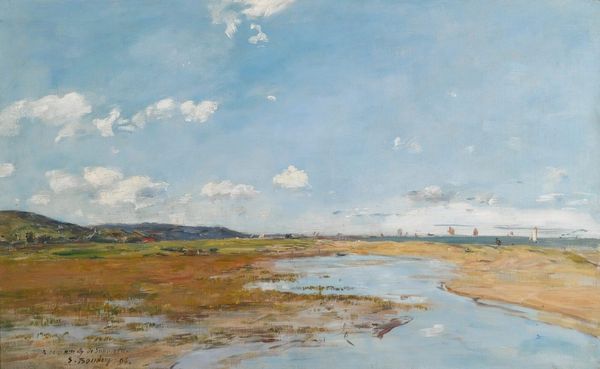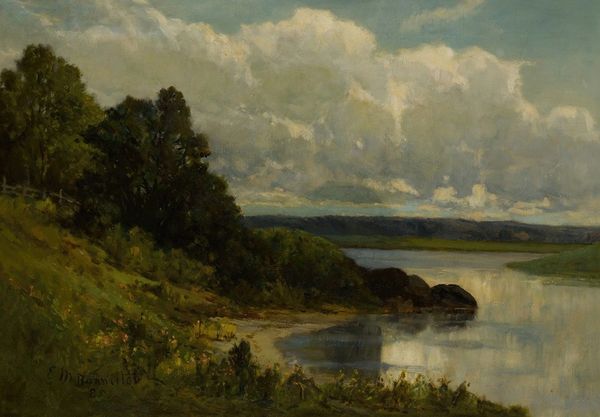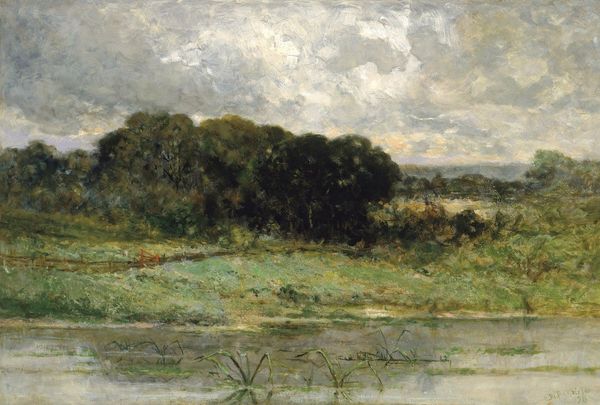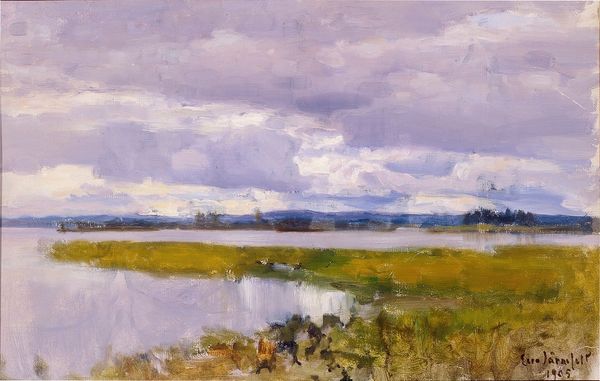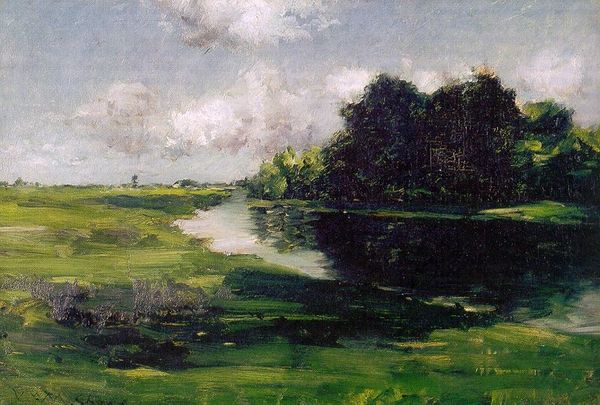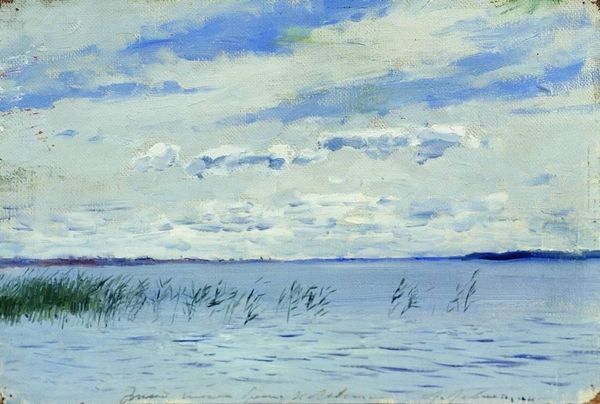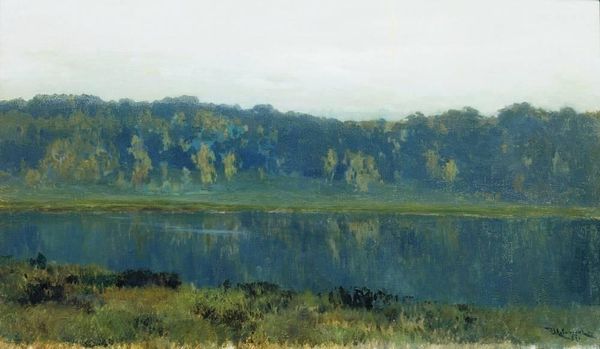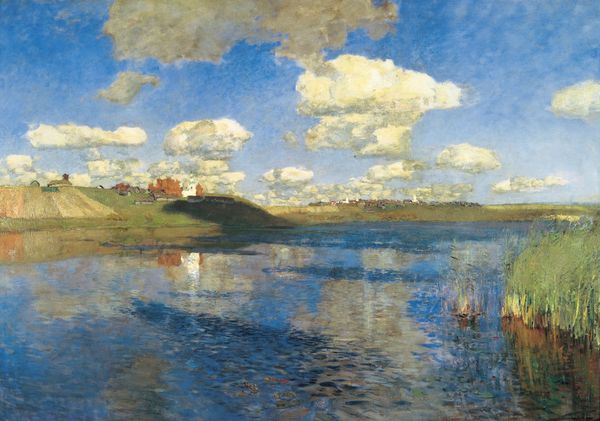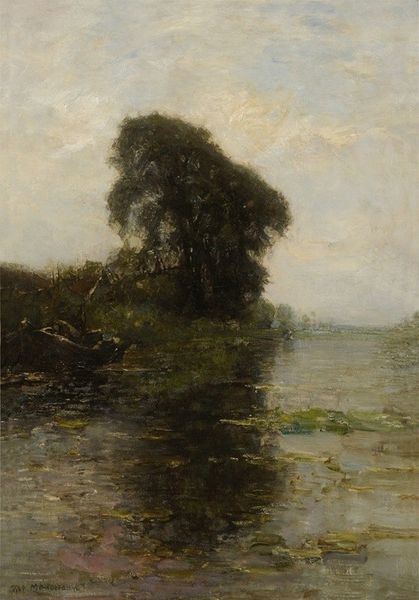
Copyright: Public domain
Curator: Isaac Levitan’s "Lake. Gray day." completed in 1895. What is your immediate reaction? Editor: Somber. There's a palpable stillness about it. The sky dominates, heavy with cloud, and the water reflects that mood, though I can make out individual brushstrokes even from here. It appears to be made with a rough hand and heavy, inexpensive materials. Curator: Precisely. And consider this: Levitan painted during a time of significant social and political unrest in Russia. The subdued palette, the seemingly endless sky, it all speaks to a particular Russian experience, a landscape imbued with the weight of its people's history. How do labor and political landscape fit together here? Editor: Well, if we examine the materials, oil paints weren't cheap, but they were becoming increasingly accessible in the late 19th century. The scale suggests a canvas produced for exhibition, likely purchased ready-made from a merchant or art supply store, an increasingly standardized system due to its burgeoning marketplace and industry. It allows for wider consumption and a broader, and increasingly wealthy, middle-class consumer. This industrial context allows for these otherwise timeless artworks to actually exist and participate in the world. Curator: I think it does go beyond mere materiality. The open sky evokes the boundless possibilities but also a crushing lack of opportunity for the serfs. The subtle reflections in the water can reflect the hope of social movements starting to boil, albeit under the surface. The grey, heavy feeling can easily point to the difficult lives of serfs during that time period. Editor: While I do see that, and appreciate its reading from an intersectional point of view, the context surrounding industrial development in art also reveals insight into the democratization of the form itself. Curator: Perhaps both forces are at play. The industrial context makes Levitan's work possible, it helps distribute it and even to a degree creates it; at the same time, its visuals and emotive expression are the direct product of his moment in history and can be further investigated with gender and class issues in mind. Editor: So it is. These paintings remind us about the interplay between personal expression and broader social changes. Art creation does not happen in a void; art making is just like all other industries. It helps bring awareness to materials and distribution, like it does to ideas of freedom.
Comments
No comments
Be the first to comment and join the conversation on the ultimate creative platform.

